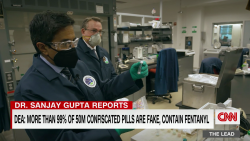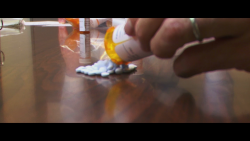Story highlights
American life expectancy has been cut short by opioids
Current life expectancy for Americans is 78.8 years
Opioid drugs – including both legally prescribed painkillers such as oxycodone and hydrocodone, as well as illegal drugs such as heroin or illicit fentanyl – are not only killing Americans, they are shortening their overall life spans. Opioids take about 2½ months off our lives, according to a new analysis published in the medical journal JAMA.
In 2015, American life expectancy dropped for the first time since 1993. Public health officials have hypothesized that opioids reduced life expectancy for non-Hispanic white people in the United States from 2000 to 2014. Researchers have now quantified how much opioids are shortening US life spans.
The researchers noted that the number of opioid overdose deaths are probably underestimated because of gaps in how death certificates are completed.
From 2000 to 2015, death rates due to heart disease, diabetes and other key causes declined, adding 2¼ years to US life expectancy. But increases in deaths from Alzheimer’s disease, suicide and other causes offset some of those gains. On average, Americans can now expect to live 78.8 years, according to data from 2015, the most recent data available. That’s a statistically significant drop of 0.1 year, about a month, from the previous year.
Women can still expect to live longer than men – 81.2 years vs. 76.3 years – but both of those estimates were lower in 2015 than they were in 2014.
Life expectancy at age 65 remained the same in 2015. Once you’ve reached that age, you can expect to live another 19.4 years. Again, women fare slightly better: 20.6 years vs. 18 years for men.
Drug overdose deaths reach new highs
Drug overdose deaths are expected to continue to reach new record highs. The Centers for Disease Control and Prevention expects drug overdose deaths to top 64,000 in 2016 when the numbers are finalized – that’s more than the number of American troops lost during the Vietnam War. Most of these overdoses involved an opioid. Since 1999, the number of opioid-related drug deaths has more than quadrupled.
While prescription opioids like oxycodone or hydrocodone were considered to be driving factors in the increasing rates of overdose in the early part of the 2000s, heroin and illicit fentanyl have become the drivers for opioid overdose deaths in recent years. In fact, the number of overdose deaths related to fentanyl is expected to more than double, from an estimated 9,945 in 2016 to 20,145 in 2017, the CDC says. For the first time, fentanyl will be the leading cause of opioid overdose.
‘It’s a national emergency’
On the heels of the release of a draft report of the President’s Commission on Combating Drug Addiction and the Opioid Crisis, over the summer, President Donald Trump said “The opioid crisis is an emergency, and I am saying, officially, right now, it is an emergency. It’s a national emergency.
“We’re going to spend a lot of time, a lot of effort and a lot of money on the opioid crisis,” he added. “It is a serious problem the likes of which we have never had.”
Yet, five weeks have passed since Trump’s statement, and the White House has yet to make any sort of formal announcement of a national emergency.
In addition, this week, New Jersey Gov. Chris Christie, a Republican who chairs the drug addiction commission, posted a letter on the White House’s website requesting an additional four weeks for the commission to complete its final report. “In the interest of submitting … sound recommendations, our research and policy development are still in progress,” wrote Christie. “Accordingly, and pursuant to the Executive Order establishing the Commission, we are seeking an additional four weeks to finalize our work.”
Follow CNN Health on Facebook and Twitter
Many public health officials point to the over-prescribing of narcotic painkillers as one of the roots of the opioid overdose epidemic. Last year, the CDC issued prescribing guidelines for using opioids to treat chronic pain. According to a recent government report, the No. 1 reason people misuse prescription drugs is to manage pain. In an attempt to help deal with the pain issue, the Trump administration is partnering with private pharmaceutical companies to help fast-track non-opioid, non-addictive pain relief alternatives.
CNN’s Ben Tinker contributed to this report.





















